If social media monitoring is about communications, measurement is about business strategy.
Advice, resources, and insight on how to make social engagement work to grow your business and career.
Viewing entries in
Social ROI
If social media monitoring is about communications, measurement is about business strategy.
Influencers get the word out with the same reach and authority that TV, radio, newspapers, and flyers did in the former media era. It is through people sharing that things spread now.
Facebook is now the great social forum where businesses can get to know their communities and build a social reputation. Budgets and expectations should be built around this understanding.
Sharability is the ingredient that must exist in every piece of content you share or you are wasting your time/investment.
How content is shared determines the ROI of the content more than the content itself and should be considered before the content is even created.
Investing in your brand without investing in who is going to influence it the most is kind of crazy. And since "social media" is so obviously about people, it's important to understand how important the personal brands of your people are on social channels.
 90% of customers will recommend brands after social media interactions (read the story) and that should make things very
90% of customers will recommend brands after social media interactions (read the story) and that should make things very  clear for every business: if you are not interacting with people you are letting someone else steal your influence.
clear for every business: if you are not interacting with people you are letting someone else steal your influence.
This study and others validate a social business posture because it supports a long-held understanding of human motivation that when people feel important, cared for, appreciated, they respond positively and with support. By talking, listening, and helping consumers, companies endear themselves to consumers in a very human way. That's social.
Showing your customers that you appreciate them and that they are important to you is and always will be the best way to earn and keep their loyalty and to spread endorsements for your brand.
Online social channels allow a business to do this in a very real and manageable way and should be a priority for any company that considers loyalty and customer recommendations to be important.
I feel a little silly explaining this but here goes: listen to what people are saying, talk to them, understand them, and show them the kindness that expresses your appreciation for them and what they have to say. These are basic communication skills for decent people and they are just as important online.
"The deepest principle in human nature is the craving to be appreciated." - William James http://t.co/KkCrbmyRjn #learnsocial
— Sociallogical™ (@soclogical) October 11, 2013
Create a list of those who influence your brand in a positive way online so you can pay special attention to them. They are as important to the success of your company and your future sales as many other factors that you invest in.
The worst thing you can do is let the supportive efforts of your influencers and advocates go unnoticed and unappreciated.
This is a brief message leading into the Canadian Thanksgiving weekend. What do you do to show your online community that you appreciate them and are thankful for their support? Please tell me in the comments. I want to know.
 Likes, follows, or being added to circles are passive expressions of a low-level of interest that businesses pursue simply because they are numbers that can be measured, pure and simple. "How many" do we have this month compared to last month? It's a natural instinct to count numbers to measure perceived growth in a space that is always misunderstood by pretty much everyone in the beginning.
Likes, follows, or being added to circles are passive expressions of a low-level of interest that businesses pursue simply because they are numbers that can be measured, pure and simple. "How many" do we have this month compared to last month? It's a natural instinct to count numbers to measure perceived growth in a space that is always misunderstood by pretty much everyone in the beginning.
But when we play with social media for a little while we eventually come back to remembering that we are in business to sell something to people who need it. And as we know from politics, just because someone says they like you doesn't mean you'll get their vote when it counts.
One of the greatest and most necessary features of social media is the ability to filter out noise. When we can listen to such a massive number of people and businesses in this wide open online world we run into limits almost immediately as humans. We need to filter to get any value out of these channels.
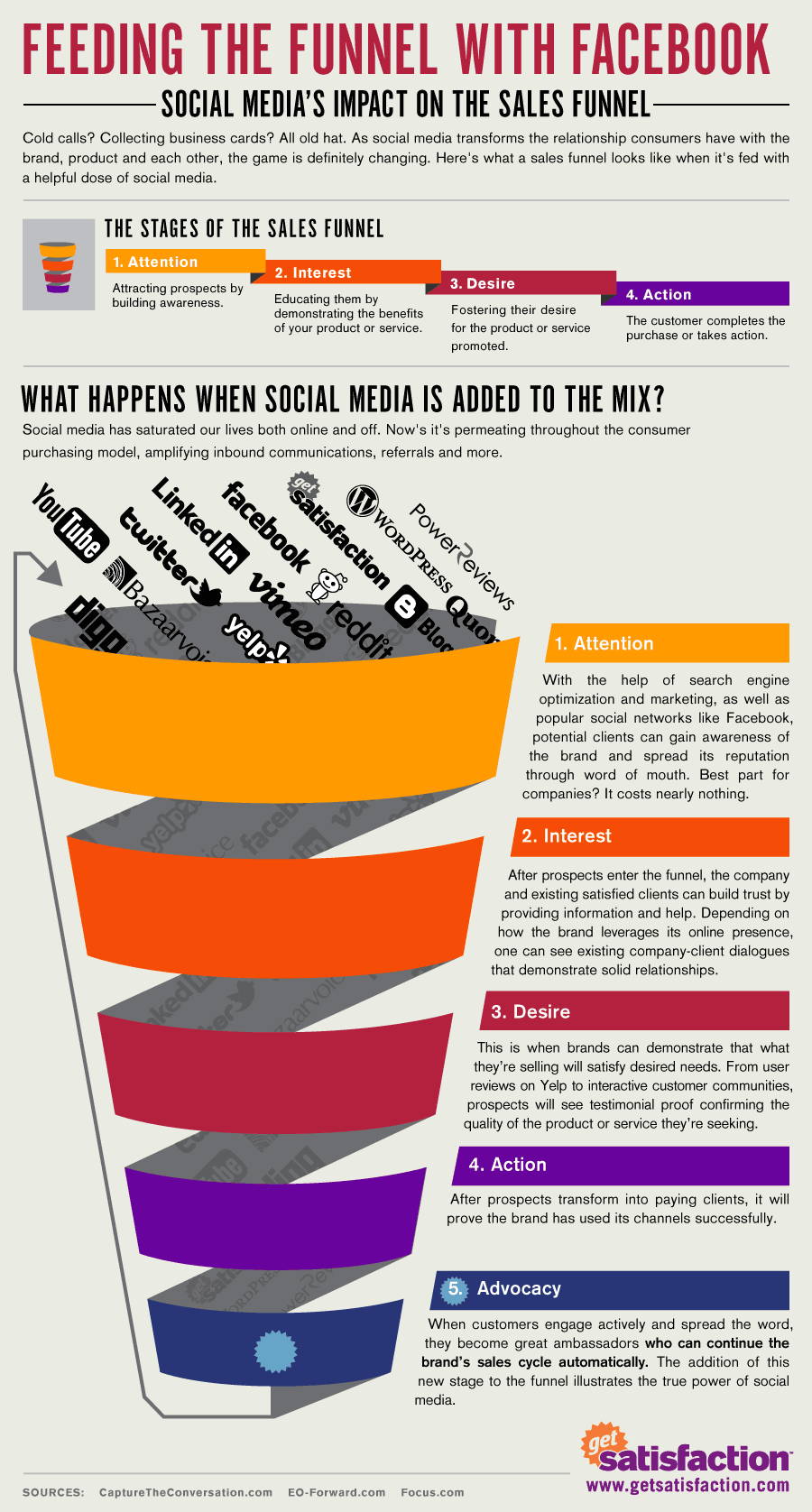
On Facebook, as quickly as you can call someone your friend or Like a business' page you can "Hide" them from your feed and never hear from them again. This should stop any business in their tracks who believes these superficial numbers count for anything close to long term value for their business. They don't.
On Twitter, the only thing gained by someone following you is that you can then send them a private direct message, which is basically an email. And we have a well-known word for a business who would abuse this channel: spam. Twitter is the truly wide open channel in which using a filtering tool so you can
pay attention to hashtags or lists of people with special interests is necessary to get any value. So if you have 1000 followers on Twitter you can't have confidence that any percent of those followers are paying attention to anything you post. What's even worse is that 85% of all tweets are never seen by anyone, ever.
LinkedIn may be the only social channel where the number of connections matters because there is little social activity. It is powerful and personal but brands struggle to get their numbers up for their Company pages on this professional, etiquette-driven channel.Google+ is the most recent major social platform to emerge and is actually built for when things get noisy. By allowing users to curate circles of their own design, it is an essential feature of this channel to choose who you want to listen to every time you visit.
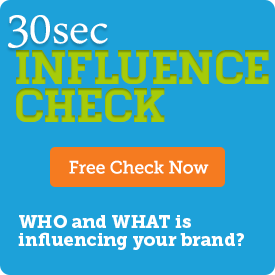
Social media presents your business with the opportunity to connect with customers in a two-way relationship. It is not a new broadcast channel and those who treat it as such are severely punished with isolation and a damaged brand. It's why so many businesses have "tried social media" and let their efforts die in frustration.
What you can do is measure activity on your channels and find out who is influencing your brand. Who is talking about you and with you and getting your content to new people who might be interested in it? Your influencers are having an impact on your brand in a way that growing follower numbers just is not. Social is about people, not audiences. [tweet this]
When you know who your influencers are you can get to know those people better. Smart businesses will look for ways to reward influencers for their interest in an effort to convert them to advocates that love what your company does and talk positively about your brand to others.
Advocates generate leads. Leads can be converted to sales. And sales are what grow businesses. Measuring this progression of the online relationship is how you measure the ROI of social.
Is your business counting followers or are you earning the deeper interest of your brand influencers? Please tell me what you've learned in the comments.
 We forget sometimes that ads are content, blogs are content, and social sharing is content. Your competitors have content and it is all public and discoverable.
We forget sometimes that ads are content, blogs are content, and social sharing is content. Your competitors have content and it is all public and discoverable.
What makes it even more interesting is that your competitor’s influencers share content too and you can watch for that as well. You can see who is spreading the word for your competitors and helping THEM grow! That is gold, is it not?
It’s not what you can discover that’s so special (although it really is), it’s what you do with the data that counts. So here are 3 things you can do when you know what your competitor is up to:
1. Watch for your competitor’s top content and dissect what makes it work and what doesn’t. When you’re confident that you have nailed what makes one of their blogs work better than another one you can incorporate the winning approach in your own content (your marketing team should have a ball with this).
2. Pay attention to who your competitor’s influencers are; the people who share your competitor’s content so they can reach their target audience. You can add them to a watch list of potential influencers of your own brand and regularly look for non-poachy ways to start and grow relationships with them. If you learn that one of their influencers is the CEO’s husband, well, you know.
3. Learn what hashtags and communities your competitor’s influencers use to get the word out and spend some time in those online neighbourhoods yourself. Use their tags occasionally and visit the blogs they visit. It’s a great way to get to know what interests your community.
Added bonus: if you know the sentiment (positive, negative) that people feel towards your competitor’s content you can think of ways to get more positive content into the same online communities. Sleeze alert: there is a huge risk of coming across as tacky if you don’t think this through with some respect for your competitor and their fans.

You can do it simply by paying attention and creating a scheduled time to regularly look at your competitor’s content. We actually use a tool called Measurely to run discovery campaigns that give us this and a bunch of other super valuable data for our clients. But if your brand community is still small you should be able to handle this with some regularly scheduled snooping and gathering of info into a spreadsheet.
It’s worth it. Your competitors are sharing content that they hope will interest the same people you are. Why limit the data you gather and learn from to just your own when you can learn from theirs too?
 Advertising has always been a bit of a game of roulette. The famous quote that captures the angst of the business owner was portrayed by John Wanamaker nearly 100 hundred years ago when he said, “half the money I spend on advertising is wasted. The trouble is I don’t know which half.”
Advertising has always been a bit of a game of roulette. The famous quote that captures the angst of the business owner was portrayed by John Wanamaker nearly 100 hundred years ago when he said, “half the money I spend on advertising is wasted. The trouble is I don’t know which half.”
I promised I would not name names.
But in the past two years I have had several clients who cut over $1000 per month or more from their advertising budgets - and saw no drop or difference in their business.
What? In one case nearly $3000 per month with no discernible difference in the bottom line? What is going on here?
If you had a big budget twenty years ago, advertising was also a bit of a math formula - or at least so I was told by my business owning friends who fighting the good fight at that time. They tell me that once you had the right channel (TV, radio, or print) you could roughly figure that if you spend X% of your gross revenue, you would see a Y% bump in the bottom line.
I am not sure the good old days were really better.
Today there are more options and more voices clamoring for your advertising and marketing budget than ever before. Do you keep you space in the Yellow Pages? Is it worth paying for exposure in the business directories? How about search engine marketing? Or social media? Everyone seems to be on Facebook these days...
Making sense of the shift to digital and social business is one of the biggest challenges for small business owners and managers these days. The shift seems to elicit one of two reactions: “Oh yeah!” or “Oh no!”
Here are a couple of quick ideas to consider if you’ve “discovered” an extra $30,000 in your advertising budget this year. Yes, I know you deserve that long postponed vacation, but this is about low-hanging fruit that will make the best ROI of what you are already doing:
If you haven’t found excess money in your advertising budget, or are struggling to figure out what might be the best use of your hard earned dollars - you can make sense of this new chaos. The businesses who do, are going to own their competition in the near future. The ones who don’t can stick their head in the sand, because even in the slowest of markets - social business is becoming the new phone, and your customers are expecting you to answer.
If you want to make sense of your advertising budget, and get a better ROI on the dollars you are already spending, join us for this focused workshop and save thousands over the course of the year...
 The hope that most businesses have is that their advertising will buy them customers immediately. But social media has introduced the long game to every business and a bigger opportunity is lost if buying new customers is the only perceived benefit.
The hope that most businesses have is that their advertising will buy them customers immediately. But social media has introduced the long game to every business and a bigger opportunity is lost if buying new customers is the only perceived benefit.
Marketing is the effort of generating awareness and demand for something. To reach large numbers of people who get their information primarily through traditional media, traditional advertising is hard to beat, especially for locally focused businesses.
If a local newspaper reaches 60,000 people and it produces 20 new customers, that’s an ROI you can judge for yourself. But if those 20 customers become members of a community that you nurture over the long-term, you have amplified the impact of your first advertising spend for many years as those 20 people continually think of you when they again need what you sell.
Traditional advertising can reach eyeballs within a certain, shrinking demographic that is still valuable to a lot of businesses. Social channels can then enable you to turn your new customer's interest into a relationship that lets you engage them and keep them interested.
Traditional advertising can help make people aware of what you sell, but big returns on your investment can only happen if you have a community that they can belong to that can continually meet their needs and keep you on their minds.
Fall 2013 Workshop: How to plan and pay for the shift from traditional marketing
Use traditional advertising to encourage people to contact you, buy your product, or walk in your door. But when that contact is made, make sure you have next steps planned to bring those interested people into your brand community where their relationship with you will mean far more in long-term sales than that first encounter.
Focus your online efforts on building a community through meeting people’s needs and interests with what you share. Focus your advertising efforts on converting people to become, not just customers, but community members. Loyalty, repeat sales, and long-term insight into what your customers want from you is what brand community building is all about.
It is not a new thing to spend money on marketing based on the number of people who will be exposed to the effort. It is a new thing to know how much money was earned as a result of money spent on a marketing effort.
While media outlets have always been able to tell advertisers the size of their audience through subscription numbers, average viewers and the like, they could never measure the outcomes that really matter to a business - they still can't. And even in the social business era, justifying a marketing effort has continued to be a measurement of buzz, chatter, and the general response created by what was shared. Is that enough?
For most brands, the goal is to make money and grow. So money spent on marketing or any other investment needs to measure how it makes money and moves the business toward its goals or it just doesn't make sense. Does it?
If you can really measure the return on investment (ROI) made in the social space with real business measures then you can start optimizing your efforts based on what has worked or not worked in your past efforts.
Last week our friends at Measurely shared a story we told to the crew at Hemmings House of how we measure the outcomes of our social media efforts using their incredible tools (see video at top of page). To make our story clear, here's what matters to us:
If Kelly shares 30 of our online assets (reshares something we posted, likes us on Facebook etc.) in a month and Bob shares 3, the buzz game tells us we should really get to know Kelly better. But if Measurely shows us that Kelly led to only one signup for our courses and Bob led to 20, business logic tells me Bob is our guy. He's the advocate who is sharing and influencing our brand and buzz alone would have put him low on our priority list.
Get it? Buzz is good. Measured growth is better.
Yes, social business is about people connecting to people, building relationships, getting to know how to help, and adjusting products or services for the people who support the brand.
But people socialize with people, not brands. A brand can't socialize any more than it can eat a sandwich. Brands can't talk and walk so brand content needs to be as focused on the things that will cause growth as possible so the brand community will have something to talk about that is relevant and useful.
Measurely has become an essential partner to help us support our client's growth goals and to help us grow our own business. We are more than happy to be advocates for them. So important has their product becomes to Sociallogical that we even created a central business service around it.
As we have said before, social activity is not busywork, it's business intelligence. With Measurely's insight we can report strategic intelligence to our clients that can make them smart in the social space and act toward growth of their companies. Without Measurely, true social optimization can't happen and we are back to guess work. That's something that was not possible before or since the emergence of social media.
How much time or money would your company spend on an activity whose effect didn't help the business grow? Probably not a lot. But without measuring the bottom line effect of the effort, how would you know?
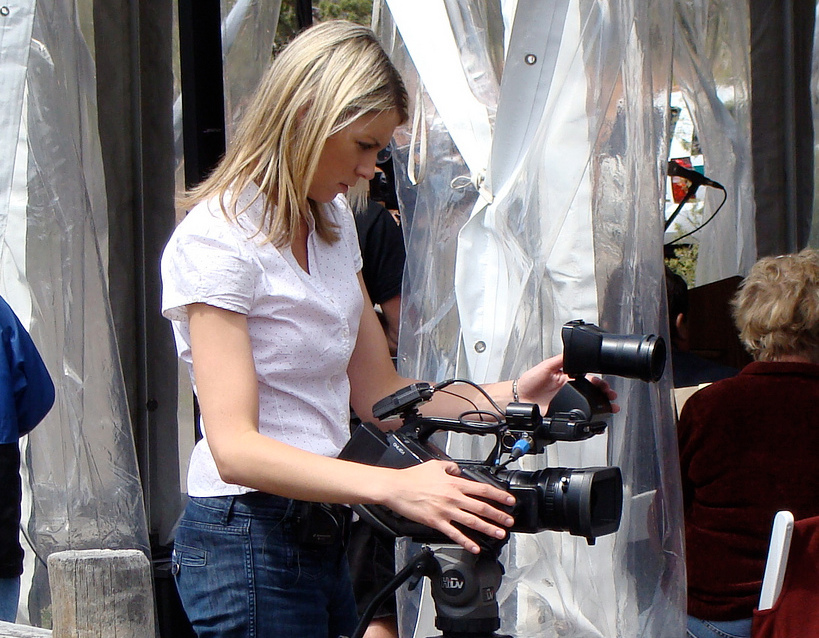 We're in the content marketing era, which is more show and less tell. Clients don't want you to tell them how great you are through advertising, they want you to show them value at the start of the relationship.
We're in the content marketing era, which is more show and less tell. Clients don't want you to tell them how great you are through advertising, they want you to show them value at the start of the relationship.
Every business has stories to tell and needs to inform, educate and be useful to clients through great storytelling. We tell stories across social media channels, blogs, and through opinion pieces, research, comments and even through our products and services themselves.
If you look at what a journalist learns it's easy to see that having their skill set in-house is a huge asset for any company that knows how important content/inbound marketing is.
I combed through the course lists for a few journalism schools online and collected a sample of course titles that I believe make my point well:
As traditional media fades away, the content that will create awareness and demand for what we sell, more and more, will need to be created, not bought. We need to share more and advertise less. Our clients need to find media-rich and useful content specific to their needs when they find us.
Journalists are trained storytellers. They are researchers, writers, listeners, and able to think from a variety of perspectives. That skill set is perfect for creating content that online communities would find interesting, useful, or even entertaining.
Here's what the most awesome journalists do really well:
The culture of non-bias that many journalism schools have ingrained in students can be a bit tricky for marketing.
Your company should have a bias. Your bias and your approach to what your clients need and the unique way that you meet that need differentiates you from your competitors and brings choice to the marketplace. The people you hire for any role in your company need to understand your unique approach well, support it, and speak from that biased perspective every time they speak for you. Non-bias does not lead to engagement that sticks and stickiness is what you're after.
I have worked with amazing journalists who have turned out to be the best storytellers any business could hire. They have the skill set I know our company needs for our content marketing and we plan to hire more of them in the coming years.
A business needs to show their value with great content instead of just telling people how amazing they are through advertising and contrived efforts. People will come to your party but if the vibe isn't good, they'll sneak out the back door.
As traditional media loses its punch, I hope more and more journalists will look to marketing departments to find a new home. Our businesses need you whether they know it yet or not.
Do you plan to hire a journalist to join your marketing team?
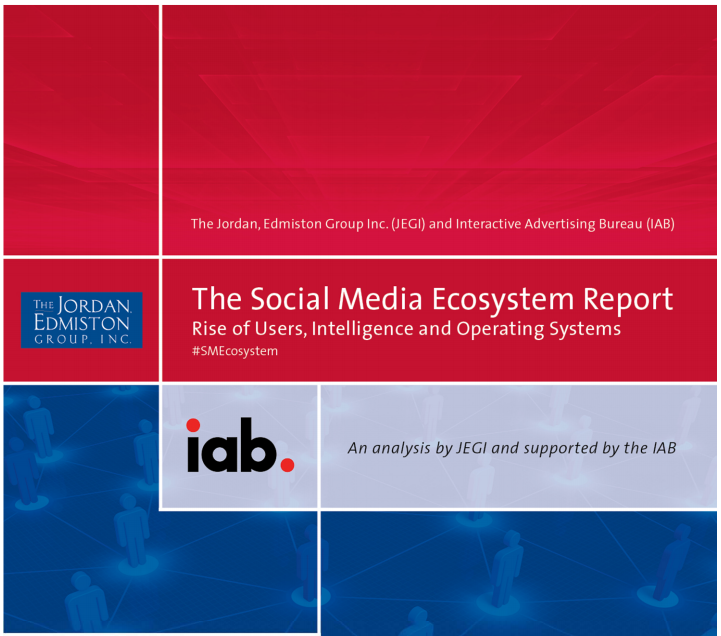 With such rapid change and extreme disruption to business caused by social media in recent years, many wonder where this is all headed. How about if we start with where we are now?
With such rapid change and extreme disruption to business caused by social media in recent years, many wonder where this is all headed. How about if we start with where we are now?
This Fall the Interactive Advertising Bureau (IAB) released a comprehensive paper on the state of the social media ecosystem which, for those who need to deeply understand something before investing in it, is very insightful and appears very accurate. As expected, it's not an entertaining piece, but it's worth a read over the weekend and for holding on for future reference.
You can grab the report titled The Social Media Ecosystem Report - Rise of Users, Intelligence and Operating Systems. Below are a few excerpts that jumped out for me as valuable, sometimes surprising, and sometimes validating of my suspicions.
What do you think? Does this information confirm or will it change any of your business plans?
"You as a brand have to be completely confident about your position, because you will get criticism. You will have a negative reaction. If you didn’t get a negative reaction, that means you’re standing neutral and you have no point of view. Who wants to participate in that?” ‐ Frank Cooper, CMO Global Consumer Engagement, PepsiCo
“Facebook and Twitter have become online gate keepers to all things social”
"Gameification is the most common tool for glossing over the lack of a value proposition (i.e., when tools and apps offer little or no true functionality) – it appeals to users’ desire to acquire and amass things (real or fake) that show status."
"The social ecosystem is anchored by platforms (e.g., Facebook, Twitter, LinkedIn, Path) that focus on users’ relationships (i.e., the “social graph”) and offer broad utility and interaction..., interest based platforms (e.g., Fancy, Spotify, Pinterest) offer broad functionality but are vertically focused, engaging the user’s “interest graph”."
"LinkedIn has been building off its “professional graph” to create an “economic graph”, wherein professional identities – on a global basis – are available, making it easier for both human resources and capital to flow to where they can best be leveraged."
"Social media services have begun to significantly transform the way businesses interact with each other, both internally, on an enterprise level, and externally, with customers."
"Apart from CRM, enterprises are also using social media for internal non‐customer facing initiatives, such as talent management and resource optimization."
"A new breed of Social Intelligence companies – technology driven agencies – will be charged with generating actionable insight and defining social ROI."
"A brand’s social strategy starts with identifying its entire audience on and off channel, segmenting the audience into different types of users, and developing an engagement strategy for each type."
"Success is uniquely defined by each company and its own campaign approach or goals. The ultimate goal is to amplify the earned media to shift or decrease the total media cost for brands."
"There is no silver bullet in social media marketing, and success must be uniquely defined."
"Social media has introduced a new form of communication between consumers and brands that allows for an around‐the‐clock, real‐time marketing and interactive customer experience. Consumer adoption of social will continue to proliferate as companies offer high value and relevant engagement opportunities."
 When considering all the ways that people will look for you or what you sell, the yellow pages won't top the list for most target markets. Not anymore. So why do so many businesses still put their money there? I have 3 theories.
When considering all the ways that people will look for you or what you sell, the yellow pages won't top the list for most target markets. Not anymore. So why do so many businesses still put their money there? I have 3 theories.
For businesses who have been around for many years, the yellow pages have long been a resource that their customers have relied on to find them and they have good anecdotal evidence to support it. That evidence is getting old.
The web and social media is not yet a comfort zone for a lot of businesses still apprehensive about committing wholeheartedly. Many have dipped their toe in that vast ocean but not a lot of them would express confidence in understanding how their customers use that medium and even fewer have figured the best way to respond to it.
And if social media is daunting, the complex algorithms and nuances of online advertising is an even tougher nut for many to crack.
That's fair, if there is evidence for it. After almost two decades of digital hegemony, there are still resistors and those who live unplugged.
In the spring of 2011 I taught our first course on understanding social business to 10 people in 3 restaurants over 3 weeks. There were men and women from their 20s through to their 60s with varying comfort levels using the internet. One of the most poignant moments for all of us was when my friend Chris asked the room how many people still use the phone book to find a person or business. Two people put up their hand.
If you search for research on yellow pages usage you'll find a ton of articles and pseudo-research that is skewed and suspect at best. It makes sense that a dying billion-dollar industry would fight with the tools they know work and today the internet and the social web are just that. The industry is using as a weapon the mediums that are eating their lunch!
What really matters is for your business to be found by your customers when they decide they want what you sell and go looking for you. And the best way to find out how people discover and reach you is to ask them. Ask how they found you and ask how they would prefer to have found you.
And with so many of the most widely used channels available to businesses for free - search, social, online directories, and more - how does a business justify the cost of the yellow pages any more? Can you? I'm curious to know.
The simple back story: The yellow pages were delivered to our doorstep unsolicited yet again this week. The picture above was taken 2 days after delivery, showing that neither we nor our neighbours could be bothered to even pick it up off our step and toss it in the bin.
 While social media gurus push hard for businesses to be busy writing content, posting links, and sharing media, most businesses can't help but become discouraged by what appears to be a lot of work without an obvious connection to sales.
While social media gurus push hard for businesses to be busy writing content, posting links, and sharing media, most businesses can't help but become discouraged by what appears to be a lot of work without an obvious connection to sales.
While I see the matter quite differently, I understand the barrier and believe it exists because not everyone understands the real opportunity social media presents.
I have said many times that social media is in its infancy. But even at this early stage, gathering data and painting a picture of what a customer wants, why they want it, and how you succeed or fail to provide it is the great gift of social media.
Today there are powerful tools that give us an enormous amount of data that could employ teams of people to interpret. But it will get easier over time as tools provide more value beyond just the data. Even now, by staying focused on continuously improving your method of gathering data and interpreting it to honestly answer the big questions will keep you ahead of customer expectations and ahead of your competitors.
Social media doesn't become social until business leaders become curious about their customers. Curiosity will create questions that you desperately need answered and those questions should start conversations that can help you give a better service worth paying for.
Start with a question you really need to have answered and start asking that question online. Ask it through the pictures, videos, blogs and tweets that you share, and answer the comments as they come in with conversation.
All of the traditional business functions need to take part in this effort. Public relations, marketing, sales, and human resources need to participate in the brand community but social media isn't just a benefit to any one of them and should not be owned by any one of them.
Social media is a lever that serves the bigger goals of the company and needs to be led by the leaders of the business, not any one department.
Here's my question that will help me serve you better: Who owns social media for your business and why?
 What are the biggest myths of social media and social business that you have come across as a consultant or have dispelled as you have learned more about social media use in business?
What are the biggest myths of social media and social business that you have come across as a consultant or have dispelled as you have learned more about social media use in business?
This is not meant to mock the wrong-headed but to be a collection to help others steer clear of misconceptions that can take them down the wrong path or lead them away from a great opportunity. Here are a few from my list:
The 3 things on my list were easy to choose as they are incredibly common. If you end up blogging about any of the items on your list or have good resources to support them, please share links with your list.
What are the biggest social media myths from your experience? Please share in the comments.
 This week Sociallogical is rolling out several updates to the content of our online course, Understand Social Business, that includes Pinterest, Instagram, Google+ and other developments over the last few months that have changed how we create and share content, build brand communities, and run companies.
This week Sociallogical is rolling out several updates to the content of our online course, Understand Social Business, that includes Pinterest, Instagram, Google+ and other developments over the last few months that have changed how we create and share content, build brand communities, and run companies.
There's a lot more that we have added, removed, and updated that you'll see in the course over the weekend. To keep up with the rapidly changing technology and cultural shifts that change how we grow companies, we're excited to bring this fresh perspective to the business teams who subscribe to our course to make the shift to social.
We want to help companies transform their cultures by helping their people understand the opportunities and goals of becoming a social business. What decisions have you made for your company this year to keep up and get ahead?
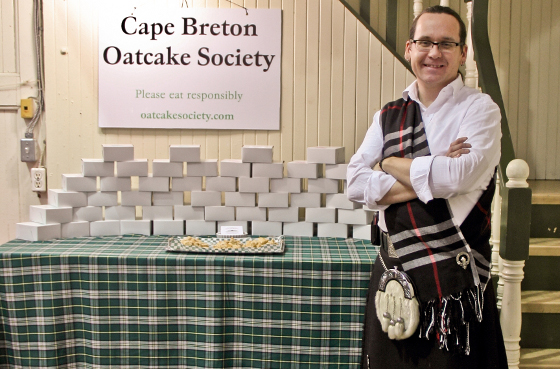 There’s a new way to strategically connect with customers that gives certainty to sellers, reduced prices to consumers, and turns the process of social promotions into an addictive game that Groupon fell short on and fizzled.
There’s a new way to strategically connect with customers that gives certainty to sellers, reduced prices to consumers, and turns the process of social promotions into an addictive game that Groupon fell short on and fizzled.
Spinzo is a brilliant new startup that is now working with merchants in a way that actually helps them grow their business instead of gouging them. Started by our friend Emmanuel Elmajian, this new startup has launched with their bright new idea and a long list of features to come that will turn merchants into happy partners - quite the opposite experience many have had with Groupon and the like.
In the highlands of Cape Breton, Nova Scotia is a rich Scottish heritage complete with its own Gaelic College, Scotch Distillery (sorry, single malt whiskey), and countless kilt-wearing performers. And from this magical little piece of the world comes our friend, Greg Pringle, and his great grandmother’s mind-blowing recipe for the best oatcakes we have ever tasted.
Greg’s oatcake baking hobby turned into a little holiday season business in November 2011 when Greg decided to put a price on his wares and promote them to friends on Facebook by starting the Cape Breton Oatcake Society. Repeatedly selling out, Greg decided to explore this hobby as a long-term business idea in January 2012 and, after hearing what Emmanuel was up to with Spinzo, I introduced our two friends to each other to see how they might work together.
Today, after his première earlier this month, Greg launched his second Spinzo deal and we’re excited to see the early days of both businesses.
Greg gets to show up at a specified place like a city market or other venue with a fully paid-for order of oatcakes. Distribution costs, waste, and uncertainty are all drastically reduced and his customers get a lower price.
Greg creates a Spinzo deal with a starting price and shares it with his Oatcake Society members. Oatcake lovers give their credit card info through Spinzo and commit to the current price but know that the price they will pay at the end will decrease for every single additional buyer.
As lovers of the product, there is an incentive to spread the word and drive the price down (like I'm doing now. I'm in on this deal!). Every new convert is a new buyer and a new price-reducer for the other buyers.
There is no tipping point that triggers the discount. The sale happens, and the price just keeps getting lower with every new buyer.
Greg identified a few needs to grow his business that Spinzo could meet for him. He can now accept orders online, track orders to bake them when needed, and he gets added, exponential exposure to new customers through the personal networks of his buyers.
It’s obvious from looking at the business model that Spinzo is flexible and genuinely eager to work with merchants. Their process now and as they scale focuses on significant effort up front to forge a partnership with their merchants instead of just selling a one-off deal.
They promote their “other” (non-Spinzo) deals on their Facebook page, their commissions are a lot lower (about 20% vs. 50% for many others), they are more open to featuring individual items, and they insist on profit for the merchant in every single deal.
Technology companies are famous for putting their innovations ahead of their customers. Many of them don’t even consider who might use their product or service until it is already built. When it comes to group buying and merchant-enabling, Spinzo is obsessed with making life better for merchants and their customers and making their own profits a function of their partner’s success.
Spinzo didn't start with a technology, it started by figuring out how to feed the growth of brand communities with a better buying model. And now a true society of oatcake lovers is born and bred.
A key part of a brand community built by focusing on a better buying experience, demonstrating how social business is more than just awareness and branding.
If you loved a product, would this kind of sales approach encourage you to share it with friends? Let us know in the comments.
 There is constant change in how we communicate and the players we have now - Facebook, Twitter, etc. - may not look like they do today for very long. But social media is a permanent fixture of the modern world and I'll tell you why I'm confident of this.
There is constant change in how we communicate and the players we have now - Facebook, Twitter, etc. - may not look like they do today for very long. But social media is a permanent fixture of the modern world and I'll tell you why I'm confident of this.
Big words that mean: high-speed internet is everywhere, including our pockets, and available to most of us. If we were still on dialup to connect to the internet then social media would be clumsy, sluggish, and few would want to use it. But, instead, most of us can have broadband and do. And it makes the networks and media available to us fast and powerful.
And it's only going to get faster, broader, and more mobile. The mobile speeds we are about to see in the next few years make even the fastest connections now available in the home pale in comparison. Soon there will be almost no delay between asking for something and getting it no matter where we find ourselves in the western world.
Unless broadband goes away, social media is here to stay.
Do you remember when storage was an issue? Do you remember what online storage even is? When I left university in the mid 1990s my laptop was able to hold less information than my Gmail account will now allow me to send in one email. The size of our hard drives were among the most important considerations when buying a new computer and just 15 years ago were commonly measured in units 1/1000000 of what we measure them in now.
Storage is so cheap now that it is a non-issue in the purchase of a new computer for most people and is being given away for free by the gigabyte. Google gives us over 7GB of storage for free - an amount I still have not yet been able to fill after over 10 years with my current Gmail account. Dropbox gives us 2 GB of free storage and many others do the same.
Have you ever paid YouTube to store and stream one of your home videos? Has last.fm or grooveshark.com dinged you because you downloaded or streamed too much data from their music servers? Storage used to be a barrier to using various forms of media and it's just not anymore. And since much of what we do on social media is share media, the limitlessness of storage is a big enabler.
Unless cheap storage goes away, social media is here to stay.
Do you know why your parents and your kids use social media? Because they can. We used to argue about the challenges of building websites and user interfaces that people will use without confusion and frustration but that doesn't happen so much anymore. Some interfaces are better than others but we have learned a tremendous amount about what works and what doesn't in engaging users and making things easy and we're not likely to unlearn these skills anytime soon.
Facebook ate MySpace's lunch largely because it was more usable and intuitive. Twitter exploded into the mainstream because it is simple-simple and takes most people about 15 minutes to figure out (sure, it takes months for most to be comfortable with it but that's a cultural issue, not a usability one).
Unless we forget everything we've learned about how to build great human interfaces, social media is here to stay.
The telephone found an important place in our business world and became an indispensable tool that connects people inside companies and with their customers and partners. Try to imagine dealing with a business that withholds the use of the telephone from its employees and refuses to give a phone number where you can reach them. I'm confident most people would refuse to do business with them.
And this will become the fate for any business who responds in a similar way to social media and their customers who demand to be served through it.
It won't happen overnight. In the early days of the telephone some businesses DID withhold the telephone from employees and considered it a distraction, not an enabler. So businesses can be forgiven for choosing a fear-based response to this new phenomenon in these early days.
But eventually consumers will only connect with businesses who are truly connecting. Talented people will only consider working for open, connected, and social corporations. Investors will only put their dollars in leadership and cultures that know how to build communities that show support with dollars and their networks.
Choose what changes you will make and when for your business. But do not make the mistake of hoping social business will go away. It won't. And based on the tremendous opportunities and benefits it provides us all, once we get past the culture shock and fear, no one should hope it does.
Am I overconfident in my prediction? Tell me how your business is making the shift or why you're not in the comments below.